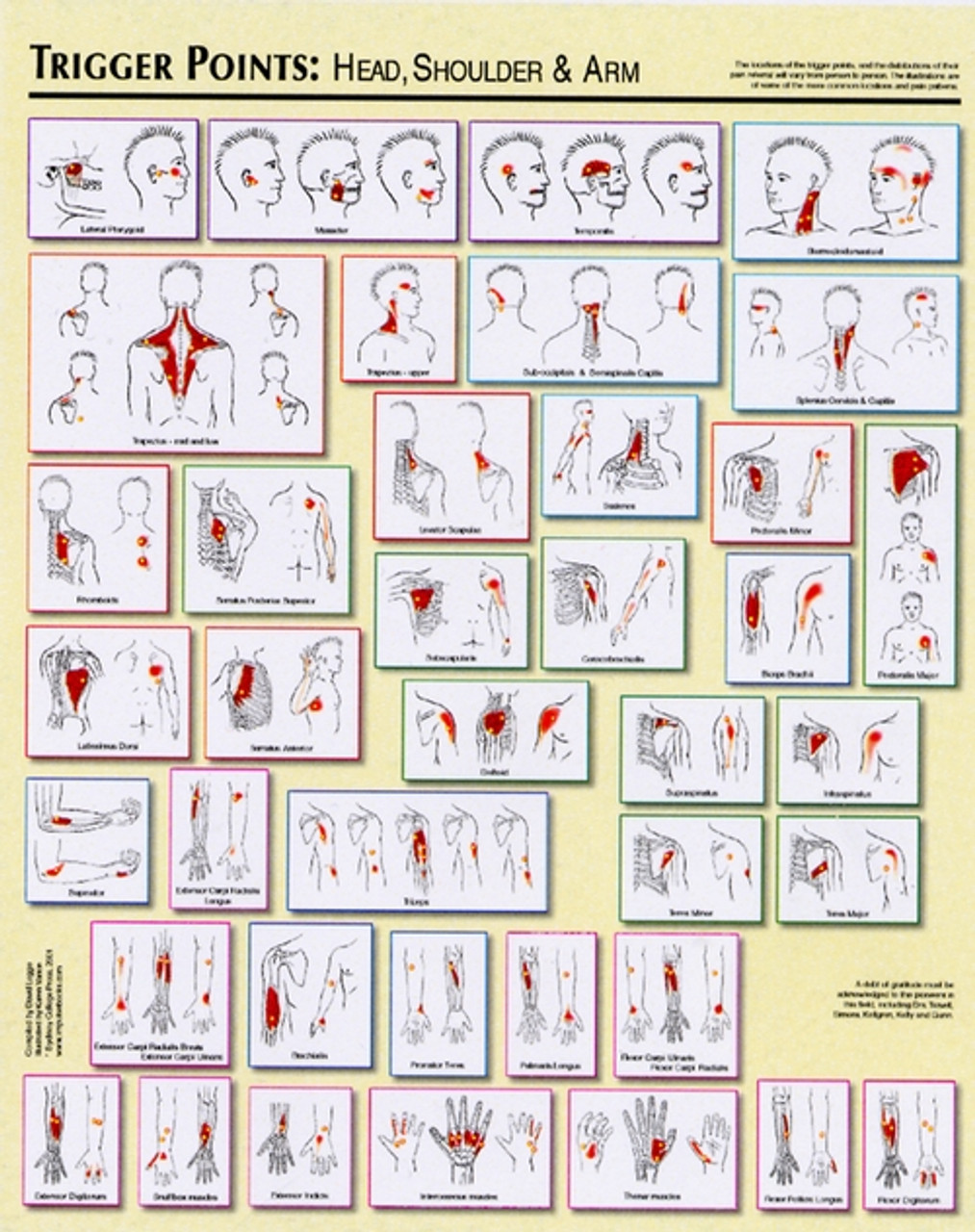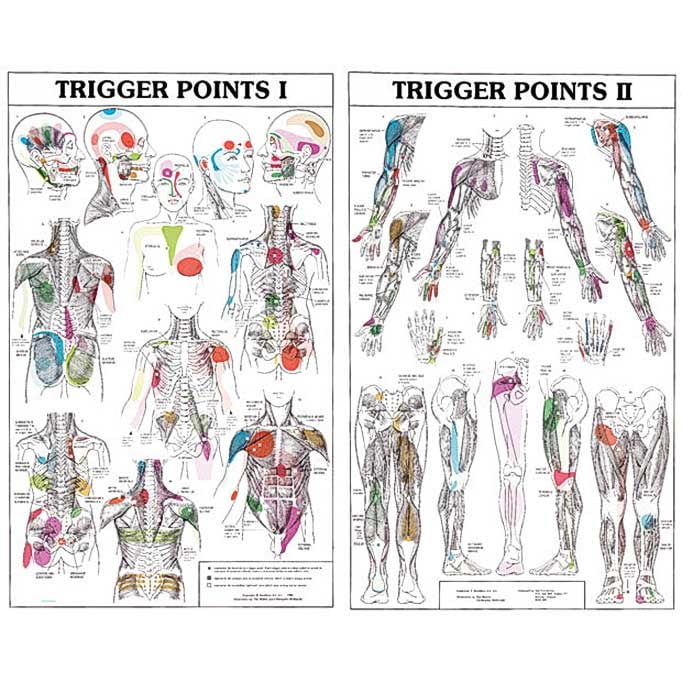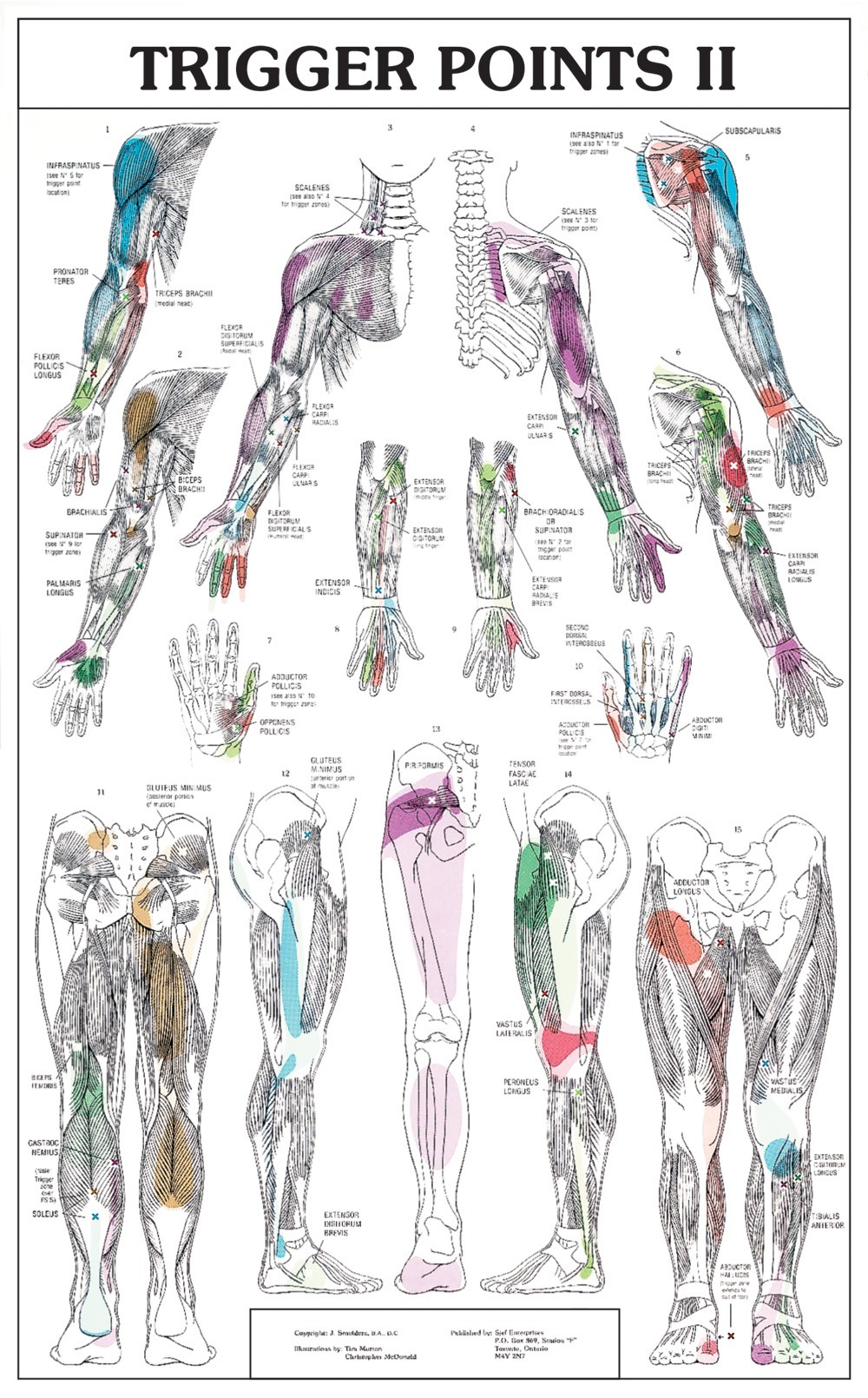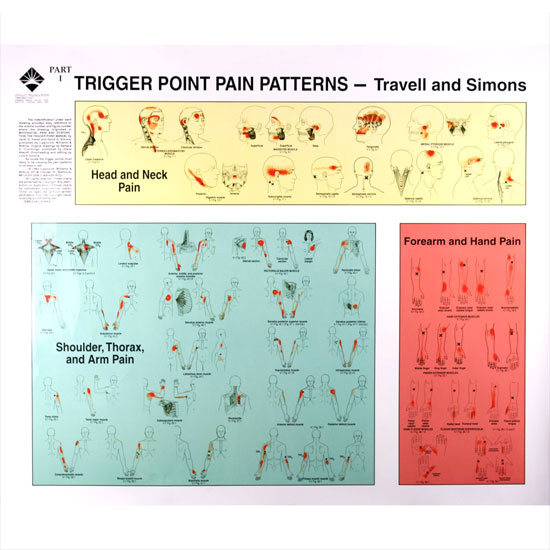Hey there, fellow health enthusiasts! Today, we are diving into the fascinating world of trigger points and trigger point injections. If you’ve ever experienced muscle pain or discomfort, there’s a good chance that trigger points might be at the root of the issue.
Understanding Trigger Points
So, what exactly are trigger points? Put simply, trigger points are tight knots or bands of muscle fibers that can form in various muscles throughout our bodies. These points can become highly sensitive, causing pain, stiffness, and even referred pain in other areas.
 It’s quite fascinating how trigger points can manifest. Certain activities, such as sitting for extended periods or repetitive motions, can lead to the development of trigger points. Stress and injuries can also contribute to their formation. Understanding the location of these trigger points can greatly help in alleviating associated pain and discomfort.
It’s quite fascinating how trigger points can manifest. Certain activities, such as sitting for extended periods or repetitive motions, can lead to the development of trigger points. Stress and injuries can also contribute to their formation. Understanding the location of these trigger points can greatly help in alleviating associated pain and discomfort.
Trigger Point Charts: Visualizing the Key Locations
One of the incredibly useful tools in identifying and treating trigger points is a trigger point chart. These charts, as the name suggests, provide a visual representation of the key locations where trigger points are commonly found.
 By referencing a trigger point chart, you can better understand the specific muscles and areas of your body that might be affected by trigger points. Armed with this knowledge, you can then explore various treatment options and techniques.
By referencing a trigger point chart, you can better understand the specific muscles and areas of your body that might be affected by trigger points. Armed with this knowledge, you can then explore various treatment options and techniques.
Trigger Point Injections: The Treatment Technique
One popular method for treating trigger points is through trigger point injections. This technique involves injecting a small amount of medication, such as an anesthetic or corticosteroid, directly into the trigger point.
Trigger point injections can provide immediate relief by reducing inflammation, releasing tension, and relaxing the affected muscles. They can also help in breaking the pain cycle associated with trigger points.
 It’s important to note that trigger point injections should always be performed by a qualified healthcare professional. They possess the necessary expertise to accurately locate the trigger points and administer the injections safely.
It’s important to note that trigger point injections should always be performed by a qualified healthcare professional. They possess the necessary expertise to accurately locate the trigger points and administer the injections safely.
Understanding the Benefits and Side Effects
Like any medical treatment, trigger point injections come with their own set of benefits and potential side effects. The primary benefit is pain relief. By reducing the tension and inflammation in the trigger point, relief can be achieved quickly.
 However, it’s important to discuss potential side effects and risks with your healthcare provider before opting for trigger point injections. Some common side effects may include temporary soreness at the injection site, bruising, or minor bleeding.
However, it’s important to discuss potential side effects and risks with your healthcare provider before opting for trigger point injections. Some common side effects may include temporary soreness at the injection site, bruising, or minor bleeding.
Complementary Treatments and Techniques
While trigger point injections can be highly effective, they are not the only option for managing trigger points. In fact, there are several complementary treatments and techniques available.
 Trigger point therapy, for example, involves applying pressure to the trigger points manually or with the help of tools, such as massage balls or foam rollers. This gentle pressure helps release tension and stimulates blood flow to the affected area.
Trigger point therapy, for example, involves applying pressure to the trigger points manually or with the help of tools, such as massage balls or foam rollers. This gentle pressure helps release tension and stimulates blood flow to the affected area.
In addition to trigger point therapy, other approaches such as acupuncture, physical therapy, and stretching exercises can also be beneficial in managing and preventing trigger point-related issues.
Empower Yourself with Knowledge!
Now that you have a better understanding of trigger points, trigger point injections, and complementary treatments, it’s time to take charge of your own well-being. Remember, knowledge is power!
 Stay informed, consult with your healthcare provider, and explore the various treatment options available. Every individual is unique, and what works best for one person may not be the ideal solution for another.
Stay informed, consult with your healthcare provider, and explore the various treatment options available. Every individual is unique, and what works best for one person may not be the ideal solution for another.
Remember, taking care of your body and addressing any discomfort or pain promptly can lead to a healthier and happier you!


 Keep exploring, stay curious, and be proactive in your journey towards optimal health and wellness!
Keep exploring, stay curious, and be proactive in your journey towards optimal health and wellness!